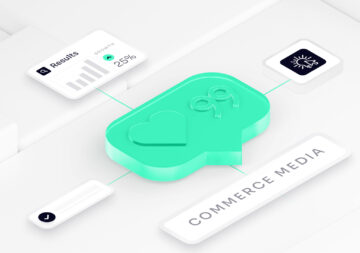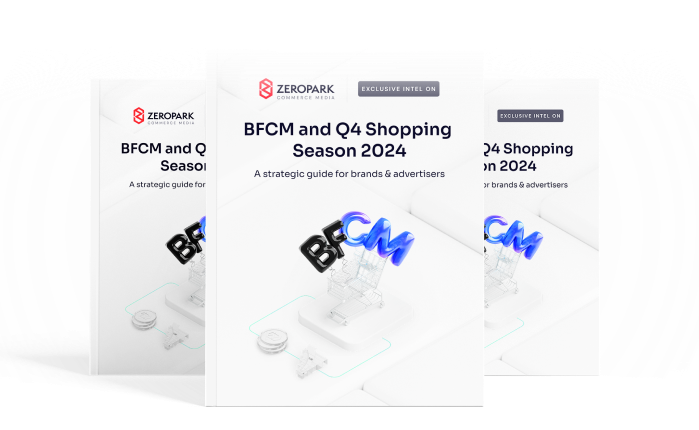Rapid changes swept over the world in 2020. Apart from the socio-economic consequences of the pandemic, the advertising industry was undergoing changes related to third-party cookie phaseouts. Sooner or later, the ongoing events and controversies have found their way into the digital sphere. While that’s nothing new, the intensified need for sensitive content and news coverage brought the attention back to the topic of brand safety.
Mixing fake news with genuine digital advertising is not what any brand wants. That’s why it’s important to educate yourself on brand safety issues, and this article is written with that purpose in mind.
What is brand safety?
Brand safety is taking measures to ensure that a brand’s digital marketing campaigns won’t appear next to any content that is deemed inappropriate, illegal, dangerous, or radically controversial. For example, content promoting illegal substances, containing hate speech, or exhorting violence towards a particular social group would be deemed non-brand-safe. Moreover, websites containing potentially controversial keywords could also be considered as potentially brand unsafe.
Brand safety is a long-existing issue that came to prominence in 2017 and is continuously highlighted in 2023.
The most infamous brand-safety incidents occurred in 2017. Google overlooked the monetization of offensive content on YouTube and through the Google Display Network. Later the same year, it was discovered that more violent and sexualized content was being monetized on YouTube. The two weren’t the only incidents occurring in 2017. Due to many other oversights that happened at the same time, the advertisers immediately stopped or limited their spending on non-search-related ad formats. Brands such as Guardian, AT&T, Verizon, Starbucks, Walmart, and more pulled their ad campaigns from YouTube.
Although the events brought on many new changes and improvements in how YouTube content is moderated, some troubles resurfaced again in 2019, resulting in more boycotts from many brands. The advertisers weren’t the only ones affected. The purge has led to the demonetization of YouTube channels (some unfairly so) because of the content of the videos.
Moreover, the topic of brand safety doesn’t usually stand alone. There are, in fact, two connected terms that should be known to marketers, media buyers, and anyone taking brand safety measures seriously.
Brand suitability relates to the promotion of content on websites that are in agreement with the advertiser’s values while not necessarily being controversial or harmful. Brand suitability regards mostly the tone, the audience, and the kind of message the company propagates.
Brand compliance relates to following guidelines and laws existing in a given area, e.g. local restrictions on gambling ads, site restrictions on political content, or age restrictions disallowing advertisements of adult content or alcohol. Disobeying such laws results mainly in fines.
Why is brand safety important?
While it might be assumed that advertising is separate and independent from the content of the page where it appears, that is not entirely the case. Consumers create associations and while that can work in your favor when forming partnerships with other well-established brands, it’s been proven to have a negative effect via association with inappropriate content.
Consumers associate brands with the content they appear near as an implied endorsement of that content. A negative implied endorsement can have long-term impacts on brand equity for years to come.
A good reputation of the brand is crucial to the success and prosperity of the business. Consumers are generally more likely to interact with a brand if the ads appear beside legitimate content. There is also a common belief held by consumers that it’s the brand’s responsibility to position itself among the highest quality content. Otherwise, the majority of polled consumers said they would stop using a brand if it appeared next to fake news or offensive content, according to a study by DoubleVerify.
Furthermore, positive or negative associations have a direct impact on the performance of your digital marketing campaigns. In a case study undertaken by the IPG ad agency, ads placed on credible news sites saw a 9% reduction in CPM and a staggering 143% higher click-through rate than a control campaign. This effectively proved that using brand safety vendors creates an impression of quality and reliability among consumers leading to more genuine interest.
Lastly, first impressions matter. While a long-established brand might not suffer big losses in ad revenue from a single incident (and might even come back to the publisher, just like some companies boycotting YouTube came back later on), a smaller brand needs reliable sources to build credibility.
What are the brand safety measures?
Although it’s nearly impossible to measure brand safety by numbers, a set of criteria can be used to assess how safe a specific ad placement really is.
Ad format/platform
Each ad format, platform, or ad placement carries a certain risk. In order to upkeep a brand’s reputation, it’s crucial to be aware of the risks and know how to avoid them. When it comes to ad display mediums, some are safer than others. For example, mobile in-app advertising is one of the most brand-safe solutions. That’s because the environment (the content of the app) is in most cases completely controlled. With additional targeting or blacklisting options enabled, the risk of safety violations is trivial.
Context
Unsafe content appearing alongside ads is what causes brand safety violations. This is usually reported by users and consumers at which point bad press for the company might be unavoidable. Context, unfortunately, is very difficult to control. Most of the time brands rely on the brand safety technology implemented by the publishers or advertising agencies.
Environments within apps are the easiest to control. Websites and social media platforms can vary in provided safety measures, depending on the implemented solutions and the nature of each platform. In the case of advertising on news websites, key credibility factors include whether news platforms avoid deceptive headlines, correct or clarify errors, and differentiate between news and opinion.
Brand suitability
While brand suitability is a distinct concept it also plays a crucial role in brand safety. The advertising campaign can vary in tone and values depending on the brand’s target audience. While a health supplement brand wouldn’t want to appear next to an article on the uselessness of health supplements, an ad for a sports clothing brand with a target audience of teens and young adults wouldn’t blend in too well on a website on activities for seniors.
In this case, publisher transparency on data and audience breakdown is critical in creating a brand-safe and suitable environment.
Brand safety vs. ad reach
The issue of brand safety vs. campaign reach is another thing to consider. While using some ad formats and advertising methods (influencer advertising, banners on news sites, social media), filtering out the inventory can significantly limit the available audience. Advertisers who turn to elaborate blacklists (of keywords, channels, or publishers) are at risk of blocking a lot of the wanted content as well.
The BS technology is also labeling large swaths of mainstream sites’ pages as “unsafe” resulting in ad revenue being suppressed — e.g. “21% of economist.com articles, 30.3% of nytimes.com, 43% of wsj.com, and 52.8% of articles on vice.com are being labeled as “brand unsafe”.
As sometimes separating the brand name from the other meaning of the word (Jaguar the car vs. jaguar the cat) is very difficult, there is a need for more advanced technology. Using context to determine the overall topic of the page, as opposed to URL only, is a good first step.
“Brand safety has had some unfortunate, unintended consequences for publishers as it’s given them less inventory [that] they’re able to monetize…”
However, there are new contextual solutions on the way that are supposed to make it easier for the industry to remain brand-safe and brand-suitable without losing a significant portion of the inventory.
What can you do to ensure brand safety?
Brand safety in digital advertising is something not to be taken lightly. It affects the brand’s reputation and consequently the ad revenue and sales. There are, however, common strategies for gaining more control over where the brand ads appear. Let’s find out what their advantages and disadvantages are.
Whitelisting and blacklisting
This is something we’ve already mentioned. This is also one of the most popular brand safety practices. Blacklisting and whitelisting is the easiest way to keep marketing efforts on a narrow path of suitability and safety. By providing a whitelist, companies can choose who to compete with and what other brands they want to be associated with. However, this will limit the incoming traffic significantly.
On the other hand, by providing a blacklist they can avoid undesirable associations. However, similarly to whitelisting, it can cause ad reach to be significantly limited. Because of excessive keyword blocking and because of ambiguous keywords, ads can end up hidden from the wrong audiences, and sites can be wrongfully labeled as unsafe.
As mentioned by IAB, the need for more advanced contextual matching tools is propelled by the unavoidable mistakes in keyword matching.
Private deals
Because of the incidents with Google and YouTube in 2017, programmatic PMP deals have become much more popular. The immediate consequence was that 74.5% of digital display ads were run via private marketplaces in the US.
PMP programmatic advertising is somewhat in between an open exchange and buying directly. It allows advertisers to set pre-bid targeting (as well as keyword blocking and whitelisting) and choose the inventory selectively. Private deals coupled with brand-safe ad formats are one of the best ways to ensure a high level of visibility while retaining safety.
Buying direct
Buying directly from a publisher is a good option, as long as the publisher is open and transparent about their brand safety credentials. The publisher site should be fool-proofed against bot traffic, invalid traffic, shady practices, and the ‘dirty dozen’. The last point would require a multi-factor verification system for every article published on the site. Making sure the publisher has an automated semantic content analysis or a manual safety checkbox for every new article are additional steps that can (and should) be taken to ensure you are getting your money’s worth in safe ad placements.
Use brand-safe ad formats
Lastly, the best possible way for advertisers to protect the brand reputation is to use contextual or intent-based advertising. This way your ad will only appear in the context of keywords you want to target, be it brand keywords or generic keywords.
Moreover, since the ad tech industry is moving towards cookieless, privacy-oriented ad formats, contextual advertising has been highlighted as one of the best ways to get your message across while remaining compliant with many existing and upcoming laws.
Conclusions
Although the topic has been brought to light as a consequence of Google’s and YouTube’s transgressions, it’s been on the minds of advertisers since the popularization of digital advertising.
Most brands protect themselves by using whitelists and blacklists, however, such technologies are still deeply flawed and carry the consequences of limited ad reach and faulty exclusion of safe sites. Another good option is tightening the relationship between advertisers and publishers. However, as long as retargeting is used, there is no way to ensure an ad wouldn’t follow a consumer from a legitimate site to a darker corner of the web.
Magdalena Bober





